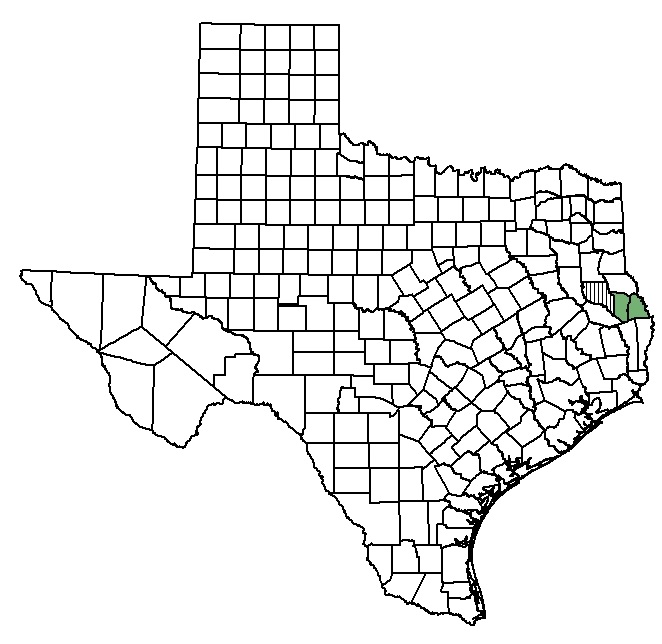Federal and State Listed Species of Texas:
Texas Golden Gladecress
Global Location
Known only from San Augustine and Sabine counties in Texas. A population was introduced into Nacogdoches County, but was reportedly extirpated in 2011 by placement of a pipeline through the site.
null
Credit:
Description
Texas golden gladecress is a 10 cm tall annual with a basal rosette of leaves. The leaf blades are 3.5-5 cm long and are toothed to shallowly lobed. The middle lobe at the leaf tip is wider than long (6-7 mm long, 8-11 mm wide) and larger than the side lobes. The four egg-shaped to tongue-shaped petals are bright yellow (7.3-9 mm long, 2-3 mm wide). The pod-like fruits (1.5-2.3 cm long, 4-5 mm long) are held erect and are slightly constricted between the 5-11 circular seeds.
Texas golden gladecress has toothed to shallowly lobed leaves. The side lobes are smaller than the middle lobe at the leaf tip (which is wider than long). The four petals are bright yellow.
Credit: Jason Singhurst - Texas Parks & Wildlife Dept.
null
Credit:
null
Credit:
Similar Species
Texas golden gladecress is not likely to be confused with any other species.
null
Credit:
null
Credit:
null
Credit:
null
Credit:
null
Credit:
null
Credit:
Floral Characters
nullLeaf Characters
nullnull
Credit:
null
Credit:
null
Credit:
Habitat
Texas golden gladecress occurs on chalky soils over the Weches Formation in glades composed of ironstone or glauconitic (“greensand”) outcrops.
Texas golden gladecress occurs in glades over the Weches Formation.
Credit: Jason Singehurst - Texas Parks & Wildlife Department.
Life Cycle Events
Flowering occurs from February to May.
Survey Season
As an annual, Texas golden gladecress dies back soon after fruiting and re-emerges just before flowering in the early spring. The plant is most easily detected when in flower February to May.
null
Additional Information
- Rare Plants of Texas
- U.S. Fish and Wildlife Service
- NatureServe
- Flora of North America
- Center for Plant Conservation
- Banta, J. 2015. A Texas golden gladecress-based analysis of Weches glades in San Augustine and Sabine Co. Texas. Horned Lizard License Plate final report. Austin: Texas Parks & Wildlife Department.

Comments
The glade habitat Texas golden gladecress occupies can fluctuate from being inundated in the winter and spring to being droughty in the summer.This is at least in part due to the presence of glauconite in the soil, a potassium and iron-rich silicate, which has a high water holding capacity. The high fluctuation in water availability decreases the number of species, which can persist in this environment.